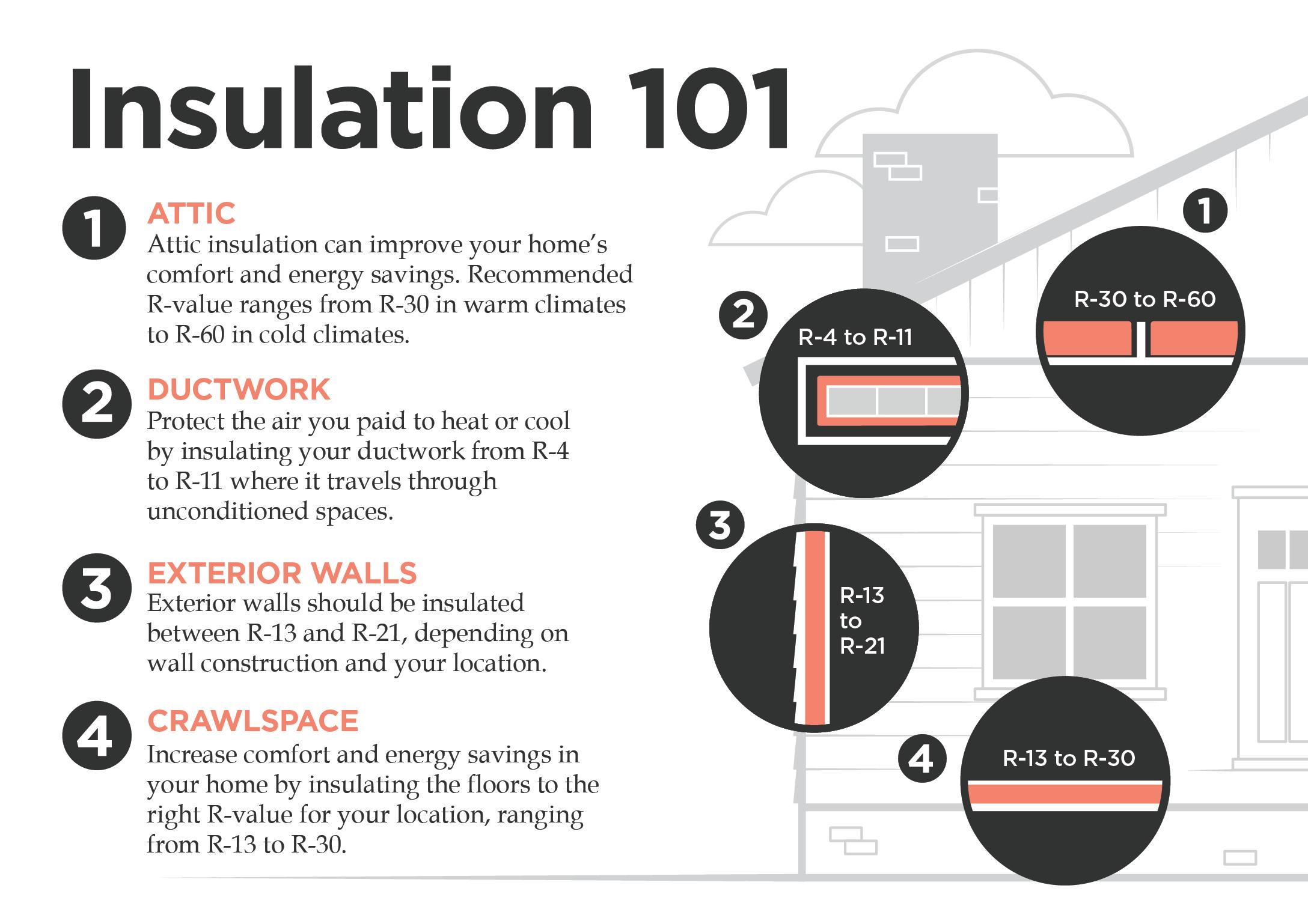
3 minute read
Insulation made easy
It isn’t pretty, but insulation and air sealing typically provide the biggest bang for your buck when it comes to home energy efficiency improvements. When installed together, they can save you money and make a big difference in comfort and energy use.
Insulation rating
Insulation is rated in R-value. The R stands for resistance to heat transfer. The higher your R-value, the slower the heat transfer, or less wasted energy. There are several different types of insulation, including fiberglass batts, blown fiberglass, cellulose, and foam. Each has its own R-value listed on the packaging. To determine the R-value of your existing insulation, multiply the number of inches by the R-value per inch for the type of insulation.
Where to insulate
The typical locations for insulation are the attic, walls, and floor. If you have a forced-air heating or cooling system, your ductwork should be insulated, too.
Attic insulation minimizes energy waste and can help maintain a more consistent temperature throughout your home. Combined with air sealing, it also can prevent ice dams from forming on your roof in colder climates.
Attics can be insulated using batts or blown-in insulation. Recommend R-values in Ohio are from R-49 to R-60. If you use your attic for storage, you can build a raised platform with room for insulation underneath. Add insulation and weatherstripping to access doors or hatches.
Exterior walls and walls separating heated and unheated areas of the home — such as garages or enclosed porches — should be insulated to an R-value ranging from R-13 to R-21.
Wall insulation can be installed during construction or a remodel. If your home wasn’t insulated when it was built, you can have the insulation blown in by a contractor. Blown-in options include cellulose, fiberglass, and foam.
Your home should also be insulated between the floor and crawlspace or unheated basement. If your basement is heated, install insulation in the box sills — the area between the foundation floor of the home’s main level.
Importance of air sealing
Think of insulation as a cozy sweater and air sealing as a windbreaker for your home. Air sealing prevents drafts and air infiltration from outside. It can improve efficiency, comfort, and indoor air quality.
Air sealing can be done as a DIY project, but it is challenging to pinpoint and properly seal air leaks. Consider hiring a contractor to complete a blower door test and seal leaks.
Typically, air sealing is done around plumbing and electrical penetrations with spray foam or caulk. If using spray foam around gas appliances, temporarily turn off pilot lights. Spray foam is extremely flammable. Sheet metal and high-temperature heat-resistant caulk should be used to seal gaps between framing, chimneys, and metal flues.
If you are considering a DIY approach, protect yourself when going into spaces with insulation. Wear a properly fitted mask or respirator. Wearing a Tyvek suit and gloves is also recommended. Kneepads can come in handy and make the crawling more bearable.
Energy audits can help
Butler Rural Electric Cooperative offers energy audits, which are often the first step in making your home more efficient. An energy audit helps you evaluate what measures you can take to improve efficiency.
Our energy audits include a blower door test, infrared camera images, and a walk-through audit of the home. An audit report is sent after the on-site energy audit is complete. This report will provide cost-effective ways to improve the comfort and efficiency of the home.
The audit is conducted by our trained employees. The cost is $150, which will be applied to the following month’s electric bill. Call us at 513-867-4400 or visit butlerrural.coop > Electric Service > Home Services > Energy Audits to schedule yours.
Making insulation and air sealing a priority adds comfort, efficiency, and savings to your home.
Stealing electricity and meter tampering are crimes
Stealing electricity and tampering with utility equipment are against the law. A person does not have to be seen tampering with a meter to be held responsible for the action.
Theft of a utility service is a first-degree misdemeanor if the value of the stolen electricity plus any utility equipment repair is less than $150. It’s a fourth-degree felony if the value is more than $150 or if the offender was previously convicted of the charge.
Tampering is interfering with, damaging, or bypassing a utility meter, conduit, or attachment with the intent to impede the correct registration of a meter or the proper function of a conduit or attachments. Conviction can cost up to five years in jail and a $2,500 fine.

Meter tampering costs all of us — the cooperative and the members we serve. Not to mention, it’s downright dangerous. If you witness someone tampering with an electric meter, contact Butler Rural Electric Cooperative at 513-867-4400.









